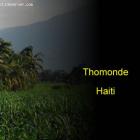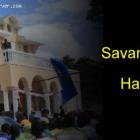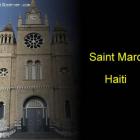ADVERTISEMENT
Sisal - Haiti Observer Blog
Sisal, Haiti Observer Blog. Read the following articles about Sisal
Fort-Liberte In The Nord Department Of Haiti
Fort-Liberté is located in Haiti's Nord-Est-Department. In Haiti, it is the oldest country and Haiti got its independence here on November 29,1803. The Dominican Republic is located close to its border. Around 11,465 people inhabit the place. The language spoken in the region is Creole. Hurricanes, storms and sunshine are all experienced bringing changes in temperature.
How It Got Its Name
Indians inhabited the region originally after which the Spanish colonists came. In 1578 they found the city of Bayaja and in 1605 abandoned it. In 1732 the French reoccupied it as Fort-Dauphin. In 1764, Spanish forces captured it and in 1801 shortly, after independence was declared in 1803, it was restored to the French.
Mineral Wealth of Trou-du-Nord will not Benefit Haitians
Trou-du-Nord is a cityship, capital of the Trou-du-Nord Arrondissement, and part of Nord Est Department. It lies in the northeast region of Haiti, with a population of 37,405 residents living in three sub-divisions, Garcin, Roucou and Roche-Plate.
The education system has a smattering of primary and secondary schools, whose students need sponsorships to pay tuition and school supplies. The primary organization offering sponsorships is the L'eglise Baptiste Trou-du-Nord Church, funding the education of 300 schoolchildren at its eponymous school.
The most pressing health challenge in Trou-du-Nord is the presence of malaria that is everywhere. The American Red Cross has a distribution program, whereby it hands out bed-nets to child-bearing women and young children. The program has been an enormous success, lowering the cases of the lethal illness significantly.
Lascahobas Economy
Lascahobas sits amid the Central Plateau of the island of Haiti. It is a second-level administrative division and the capital of Lascahobas Arrondissement. With a population numbering 41,716 residents, it is a one-hour drive from the Haiti-Dominican republic border. Three sub-divisions comprise Lascahobas, Little Background, Hoye, and Juampus.
In Lascahobas, agriculture drives the economy. Local farmland produces coffee, sisal, tobacco, and sugar crops. Sold at the always-crowded town market, the sale of these products supports commerce as a vital component of the community. A principle reason agrarian activity flourishes in Lascahobas is the well-irrigated farmland that draws water from the Lascahobas River.
Our objective is to share with you news and information about Haiti and the people of Haiti. Traditions, habits and the way we were or grew are alive in this site. We highly recommend that you Subscribe to our Newsletter and also share with us some of the things that are memorable and made us unique people.

 Newsletter
Newsletter  Haitians are a Proud People
Haitians are a Proud People  Thomonde, Haiti
Thomonde, Haiti  The Town of Savanette, Haiti
The Town of Savanette, Haiti  Saint Marc, Haiti
Saint Marc, Haiti